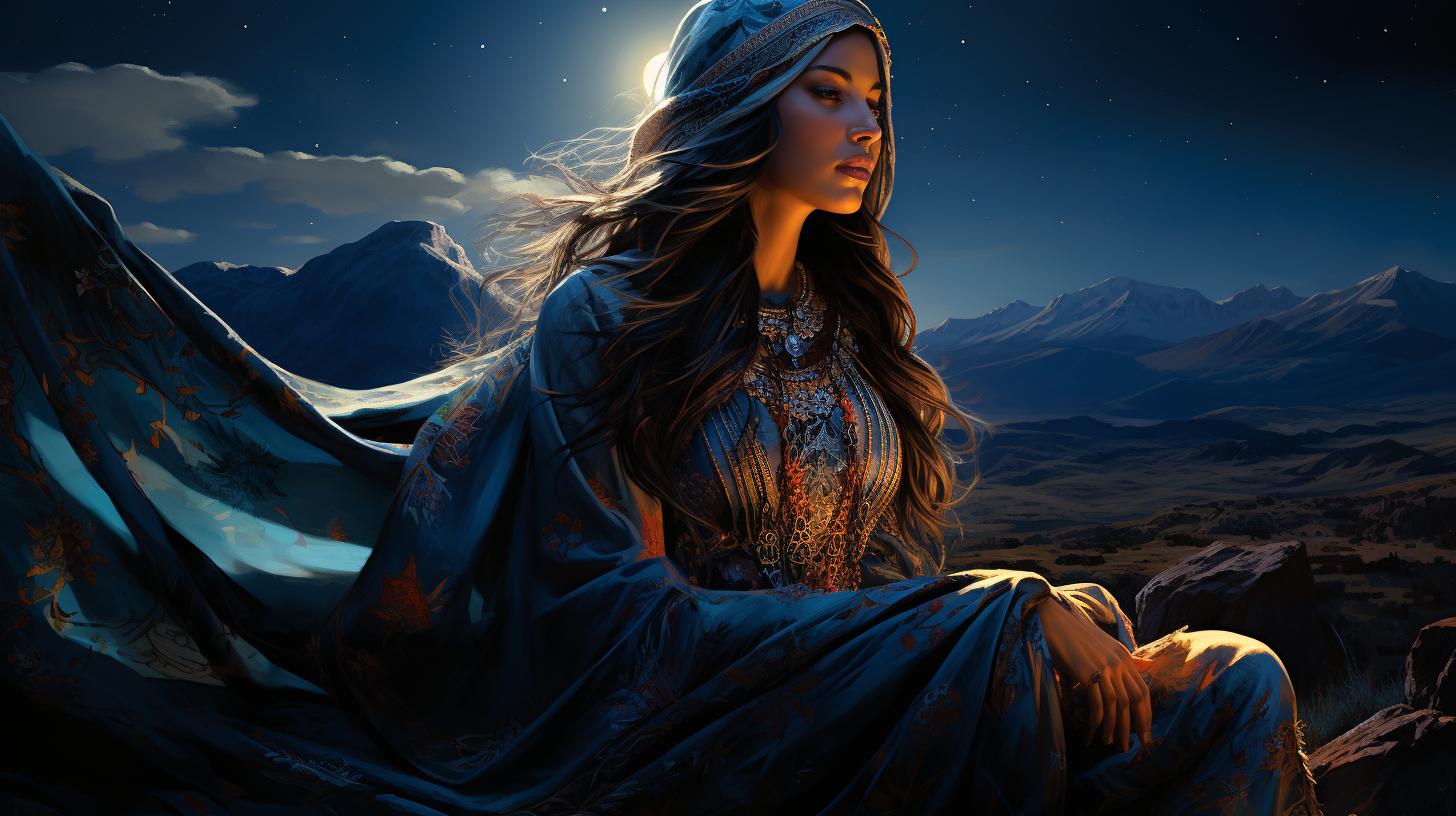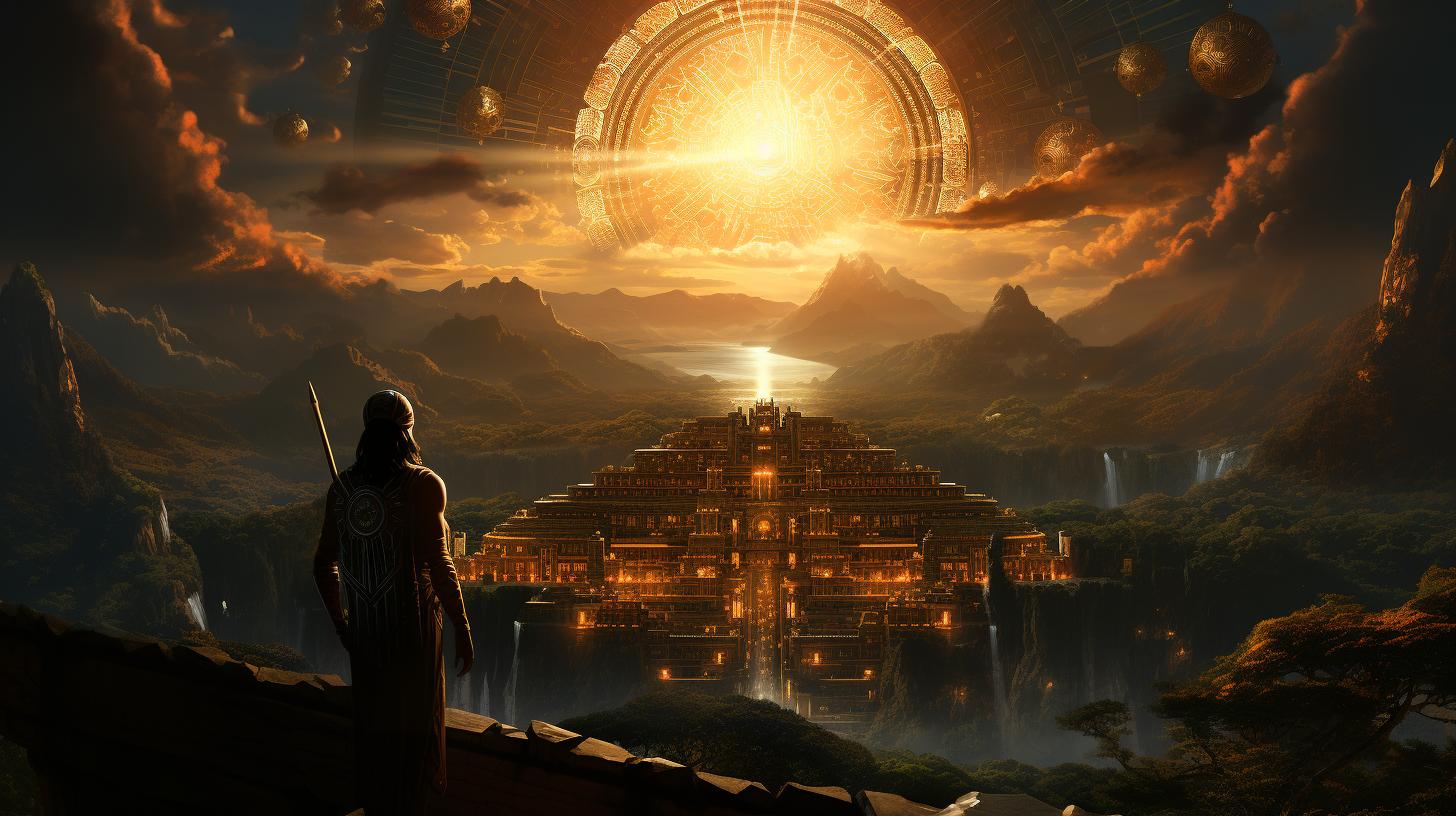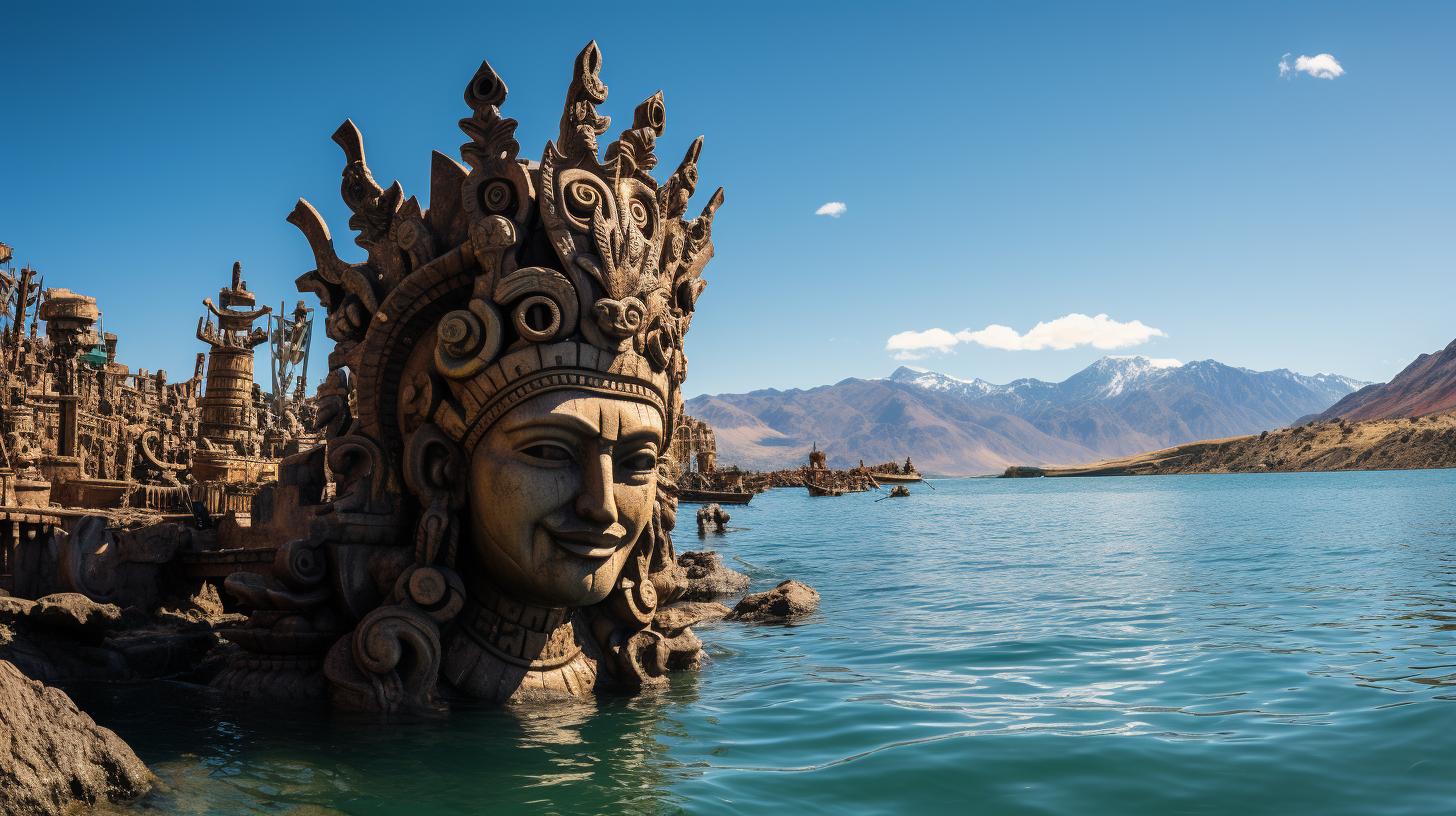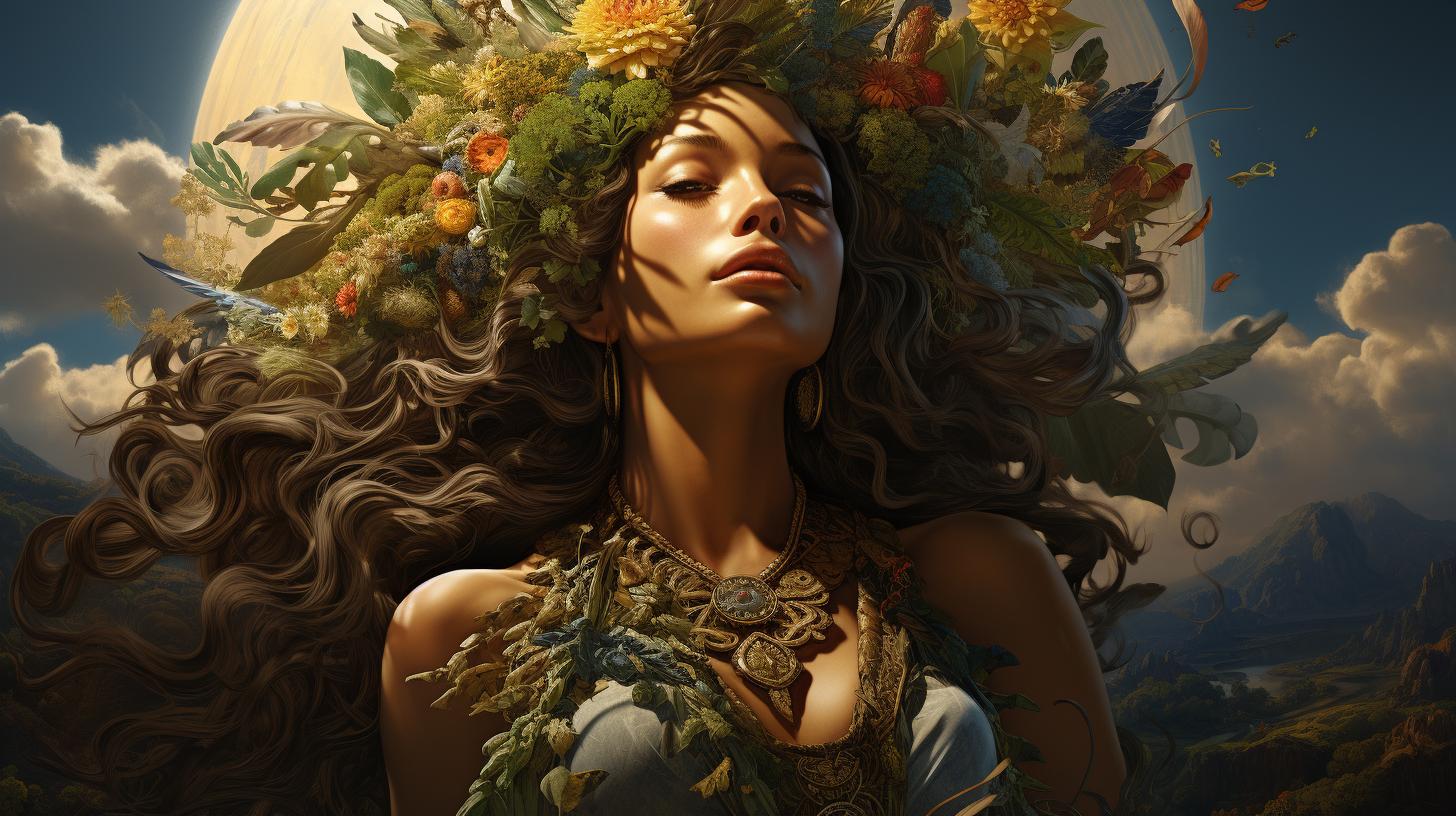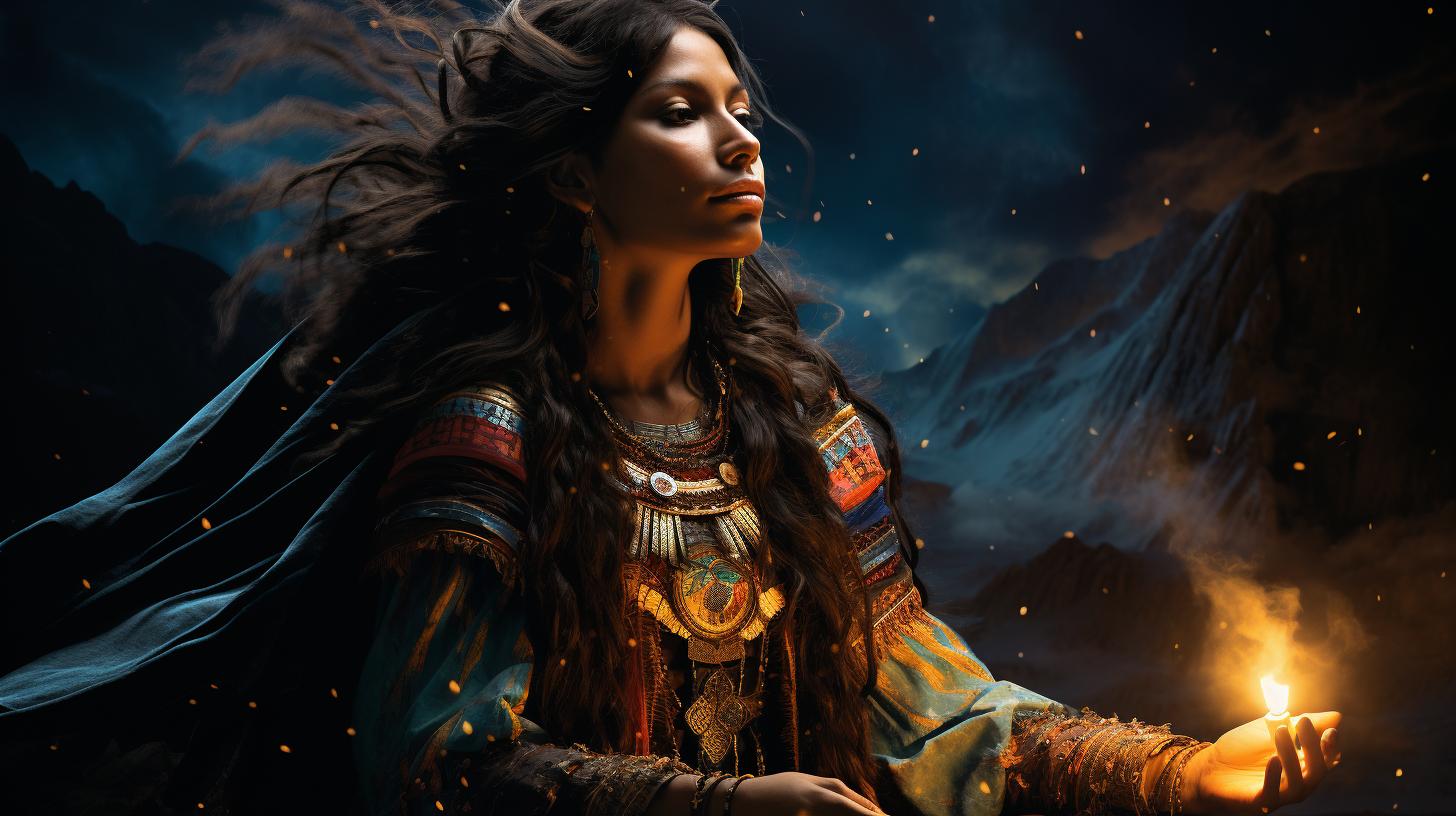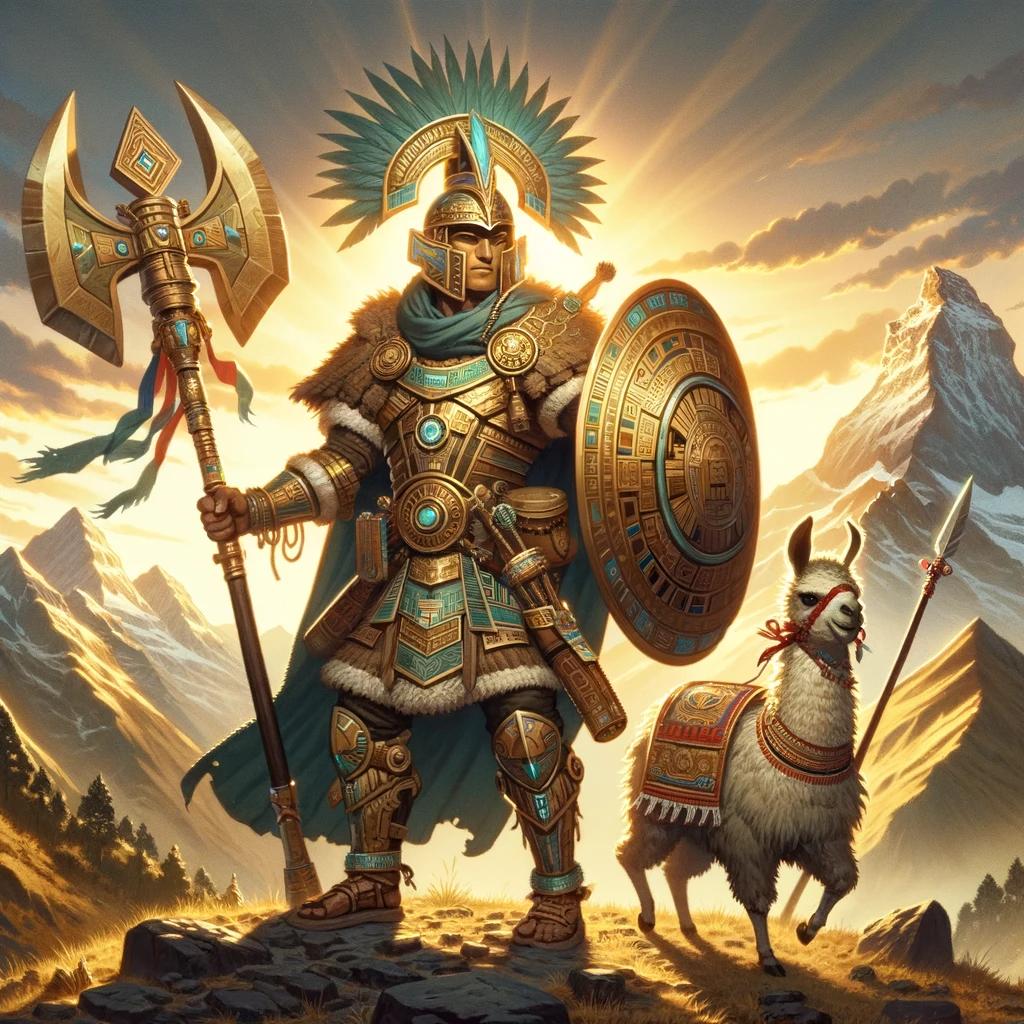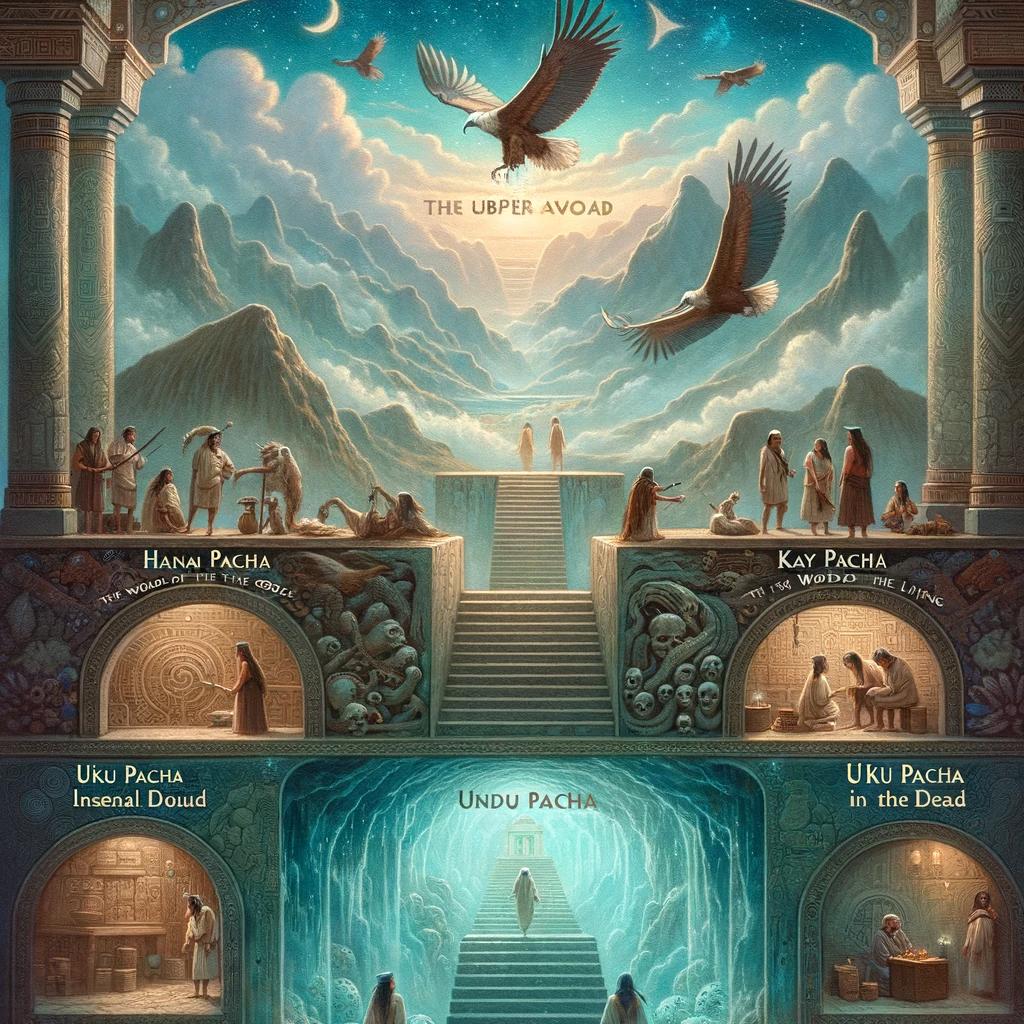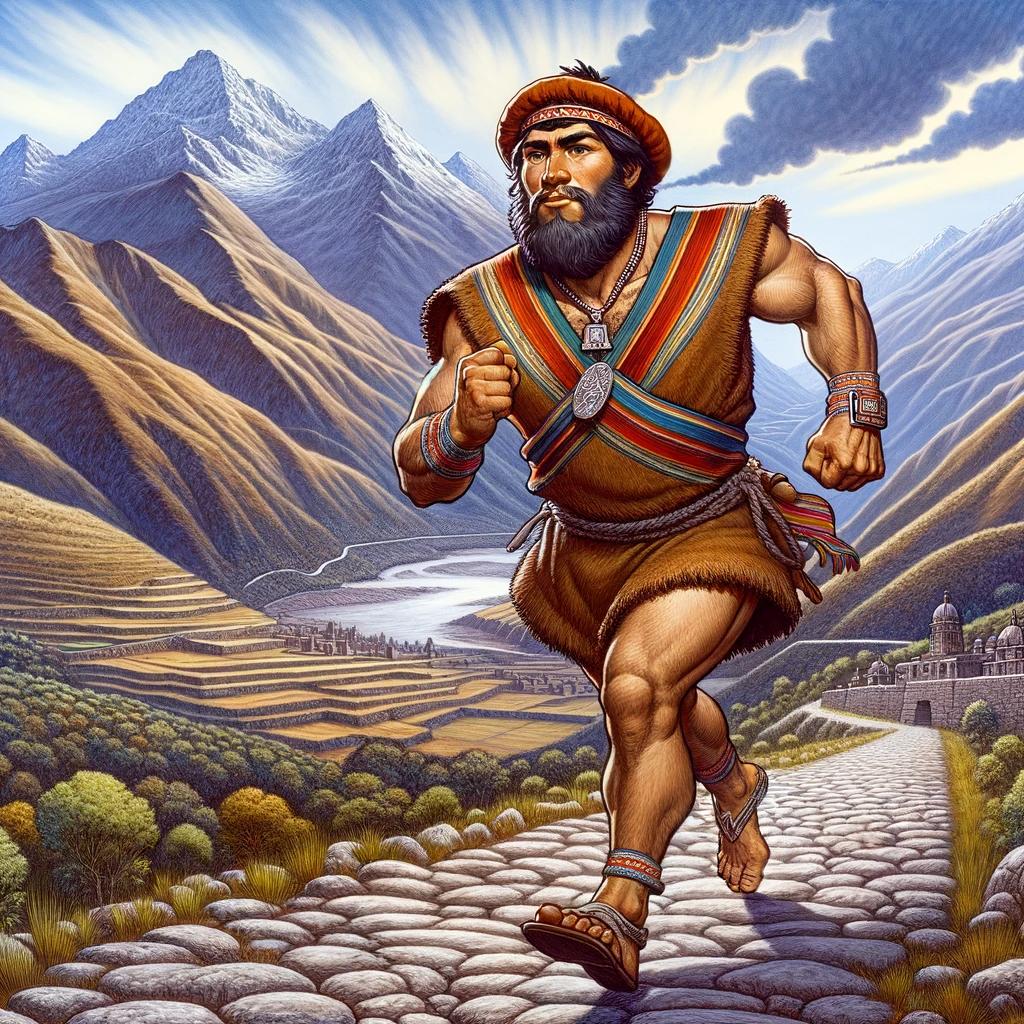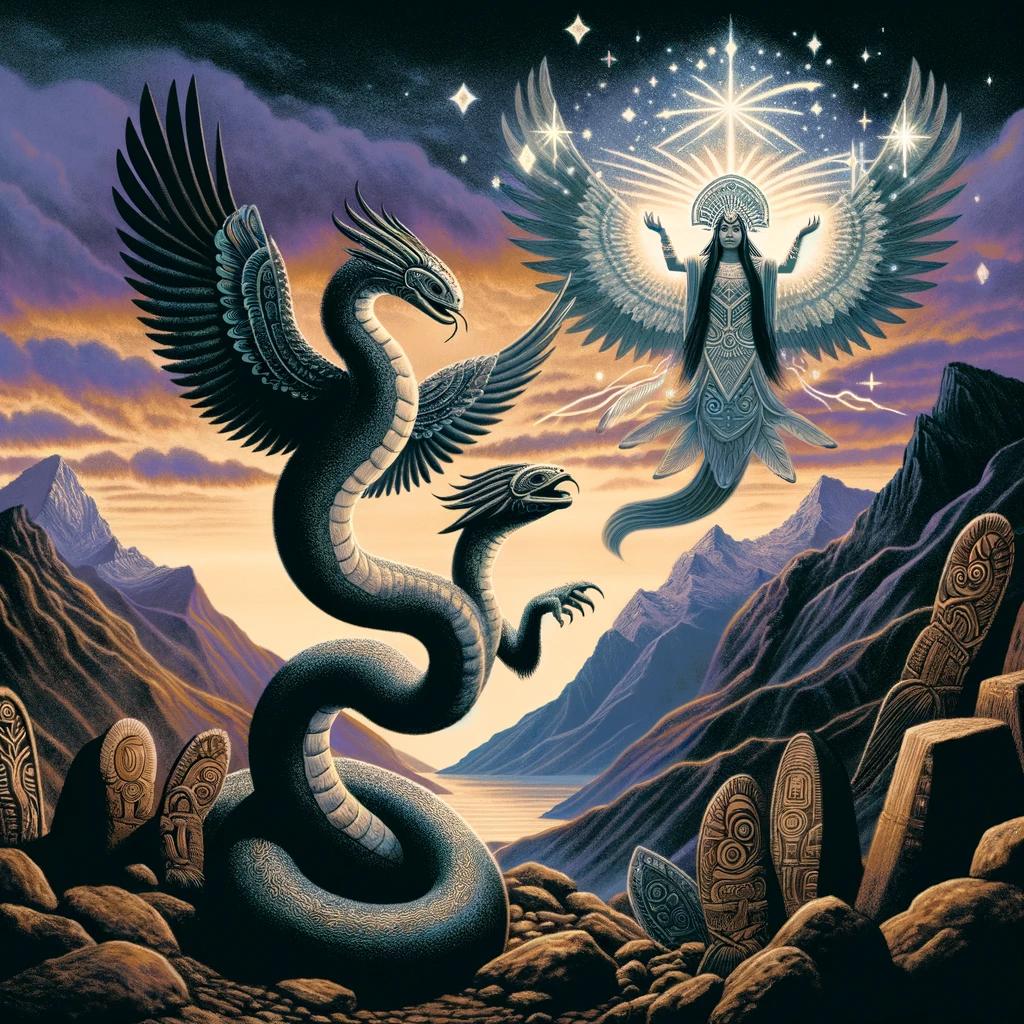Mama Quilla: The Inca Goddess of the Moon Unveiled

Mama Quilla, also known as Mama Killa or Mother Moon, is the ancient Inca goddess of the moon. Revered as the protector of women and associated with marriage and the menstrual cycle, Mama Quilla held her own temple in Cusco, Peru.
Represented by a silver disc in the shape of a moon with a human face, she played a crucial role in Inca society, regulating menstrual cycles and guiding the timing of festivals.
Cultural connections exist with languages such as Quechua, Aymara, and Mapuche, indicating a broader significance beyond the Inca civilization. The adoration of Mama Quilla involved dedicated priestesses and rituals to honor this important deity.
Mama Quilla: The Inca Goddess of the Moon
Mama Quilla, also known as Mama Killa or Mother Moon, holds a prominent position in Inca mythology as the goddess of the moon. She is revered for her role in protecting women and influencing marriage and fertility.
Let’s explore the origins, symbolism, cultural connections, worship, and the enduring legacy of Mama Quilla.
Origins and Mythology of Mama Quilla
Mama Quilla has her roots in the Inca pantheon, which consists of numerous gods and goddesses worshipped by the ancient Incas. She is believed to be the daughter of Viracocha, the supreme creator deity, and Mama Cocha, the goddess of the sea.
This divine lineage connects her to other significant deities within the Inca belief system.
Symbolism and Importance of Mama Quilla
Mama Quilla’s symbolism is deeply intertwined with lunar cycles and the natural forces of femininity. As the lunar goddess, she represents the ever-changing aspects of the moon and its influence on women’s cycles.
Additionally, Mama Quilla is associated with marriage and fertility, emphasizing her relevance in the lives of the Incas.
Cultural Connections and Beliefs Surrounding Mama Quilla
Mama Quilla’s influence extends beyond the Inca civilization. Linguistic connections can be found in indigenous languages like Quechua, Aymara, and Mapuche, where similar words for “moon” exist. This cultural connection suggests a shared significance attached to the lunar entity.
Furthermore, the Incas held beliefs and superstitions surrounding lunar eclipses and interpreted lunar dark spots as signs linked to Mama Quilla.
Worship and Rituals Dedicated to Mama Quilla
Mama Quilla evoked devotion and reverence from the Incas, leading to the establishment of temples and the appointment of sacerdotisas (priestesses) dedicated to her worship. Rituals and offerings were performed to honor the moon goddess, further reinforcing her significance in Inca religious practices.
Legacy and Continued Importance of Mama Quilla
Mama Quilla’s influence was profound and left a lasting impact on Inca society and culture. Her role in regulating menstrual cycles and timing festivals based on lunar phases reflects her enduring importance.
In contemporary times, there has been a resurgence of interest in Inca heritage, leading to the recognition and appreciation of Mama Quilla’s cultural significance.
Mama Quilla’s Family and Divine Connections
Mama Quilla’s lineage and relationships within the Inca pantheon highlight her significance in Inca mythology and religious beliefs. She is the daughter of Viracocha, the supreme creator deity, and Mama Cocha, the goddess of the sea.
This divine lineage connects Mama Quilla to the cosmic forces and natural elements revered by the Inca civilization.
Relationship with Viracocha and Mama Cocha
As the daughter of Viracocha and Mama Cocha, Mama Quilla holds a prominent position within the Inca pantheon. Viracocha, known as the supreme creator deity, is revered for his role in bringing the world into existence.
Mama Cocha, the goddess of the sea, symbolizes fertility and abundance. Mama Quilla’s connection to both Viracocha and Mama Cocha solidifies her place among the deities associated with creation and the natural world.
Marriage to Inti: The Sun God
Mama Quilla’s most notable relationship is with Inti, the Inca god of the sun. In Inca mythology, Mama Quilla and Inti are not only husband and wife but also siblings, emphasizing the significance of the sun-moon relationship in their cosmic roles.
As the goddess of the moon, Mama Quilla perfectly complements Inti, who represents the sun and its life-giving properties. Their union symbolizes balance and harmony in the cosmos and plays a vital role in Inca cosmology and religious practices.
Siblings and Offspring of Mama Quilla
Mama Quilla has several notable siblings and offspring within Inca mythology. Pachamama, the earth goddess, is Mama Quilla’s sister and represents the fertile, nurturing qualities of the land.
Manco Capac, Mama Quilla’s son, is the first ruler and god of fire in Inca mythology. Mama Ocllo, Mama Quilla’s daughter, is revered as the goddess of weaving and textiles, embodying the traditions and craftsmanship of the Inca civilization.
Pachacamac, another offspring of Mama Quilla, is a deity associated with the creation and development of the earth. Kon, another son, is the god of rain and the southern winds, considered essential for agricultural prosperity.
This intricate web of relationships exemplifies Mama Quilla’s central role in Inca cosmology, as she connects various aspects of nature, creation, and human existence. Understanding her divine connections sheds light on the importance of Mama Quilla as the goddess of the moon and her influence on Inca society and culture.
Beliefs and Practices Related to Mama Quilla in Inca Society
Mama Quilla, as the Inca goddess of the moon, held significant importance in Inca society, shaping their beliefs and practices. Let’s explore how she was revered and the customs associated with her.
Mama Quilla as the Protector of Women and Menstrual Cycles
Mama Quilla played a crucial role as the protector of women and overseer of menstrual cycles in Inca society. She was believed to have the power to regulate and influence these cycles, ensuring fertility and the well-being of women.
Her unique connection to the moon symbolized the cyclical nature of menstruation and its ties to the lunar phases.
The Fox and Mama Quilla: Myth and Superstitions
In Inca mythology, it was believed that the dark spots on the moon were caused by a fox’s affection for Mama Quilla. As a result, eclipses were feared by the Incas, as they were perceived as the moon goddess being attacked by an animal.
To ward off this threat, the Incas engaged in various practices, such as throwing weapons, making wild gestures, and creating noise.
The Worship of Mama Quilla in Inca Religion
Mama Quilla was highly venerated in Inca religion, with dedicated temples and priestesses devoted to her worship. Priestesses, known as sacerdotisas, played a pivotal role in carrying out rituals and offerings to honor the moon goddess.
These ceremonies and acts of devotion aimed to seek her blessings and ensure the continued harmony and balance of the Inca civilization.
Mama Quilla in Language, Culture, and Cosmology
The name “Mama Quilla” holds linguistic connections across indigenous languages such as Quechua, Aymara, and Mapuche, indicating a possible cultural linkage. In both Mapuche and Andean cosmology, the moon (Quilla) and the sun (Inti) are depicted as cosmic spouses, emphasizing the significance of Mama Quilla’s role and her relationship with Inti in Inca mythology.
Mama Quilla’s Enduring Significance in Modern Times
The legacy of Mama Quilla and her influence on Inca society continues to resonate in modern times. Through the revival and appreciation of Inca heritage, her importance has been revived and acknowledged.
Many individuals still recognize her as a powerful symbol of femininity, fertility, and the sacred connection between the moon and humanity.
.

